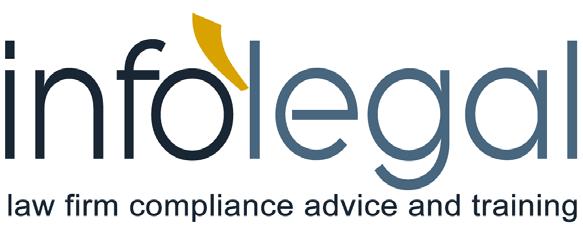
5 minute read
Regulation Report: Revised Guidance On Money Laundering Compliance For The Legal Profession
REGULATION REPORT
WRITTEN BY MATTHEW MOORE, CONSULTANT SOLICITOR WITH JAYNE WILLETTS & CO SOLICITORS The Legal Sector Affinity Group (“LSAG”) issued its revised guidance on Anti-Money Laundering Compliance through the SRA and all the other legal regulatory bodies in the UK in late January.
The changes that it makes to those main elements of the controls that have now been in place for many years are arguably not great, but the advice is now much more detailed and specific than before, and the clear thrust of the new guidance note is that genuine commitment is now required from all those firms that find themselves subject to the AML regime. This suggests that the mere “tick box” compliance regime that can be observed in many firms as to what is required will no longer be adequate. This, in turn, may make it more likely that any perceived failings will be more likely to attract disciplinary measures if and when problems do come to light.
One of the most notable features of the revised guidance is the set of “compliance principles” at 3.2 which are then expanded upon throughout the rest of the document. This long list of 36 points might also prove useful by way of a relatively short introductory briefing note for partners and other colleagues.
The need for a committed response to the AML challenge The earlier sections of the LSAG guidance are mostly concerned with setting the scene for the revisions now in place for what is expected of all firms.
The other point worth stressing at the outset is that the whole issue of AML compliance consists of two separate but interlinking areas: avoidance of the criminal offences that mainly arise under the relevant sections of the Proceeds of Crime Act 2002, as amended, (POCA) and then also the need to comply with the Money Laundering Regulations 2017.
Technically, the SRA and other legal regulatory bodies have no particular involvement in the enforcement of the criminal legal provisions found in the various statutes that are in force, and POCA in particular, but on the

other hand they are the responsible bodies for ensuring that the regulatory requirements are working effectively amongst those organisations and people that they are responsible for.
Since the LSAG guidance sets out how they will do so this guidance note assumes a good deal of significance for all who are subject to it.
It is also often overlooked that non-compliance with the Money Laundering Regulations brings with it not just the risk of enforcement action by the regulator but can also be dealt with as a criminal offence in any event.
One recent example of this arose in the conviction reported as R v Neil Richard Bolton 2018. Here the conveyancer concerned was found to have made “no serious attempt to comply with the regulations”, and Perhaps the main message from the revised guidance note is therefore that it must be understood throughout the firm, and by all partners in particular, that continued AML non-compliance will lead to significant risks for the firm and key personnel alike.
Any adverse findings by the regulator or possible criminal process will, of course, be immensely stressful for all concerned, and from the tone and contents of the revised guidance this does seem to be more likely now than might have been the case in the past. Technology
Of the various new sections in the revised AML guidance note section 7, dealing with the relevance of technology in the need to ensure compliance with the legal and professional duties that now exist, covers new ground and is particularly topical.
As this section observes, a range of technological devices are now available to assist with the regulatory burden of AML compliance, including the increasing range of electronic means to help identify and verify clients.
Other services covered in this way also include the potential for screening against such critical issues as international sanctions and PEP status.
This part of the guidance admits for the first time that the growing sophistication of such methods may be at least as reliable as the more commonplace face-to-face checking methods that have prevailed to date, and that a “more nuanced” view should therefore now be taken to their use.
This is matched by warnings in relation to cyber and data security, however, as well as the risk of human error leading to the checking of the wrong individuals.
There is also a cautionary note to the effect that the wider risks of the CDD process will always need to be met by judgement calls based on the particular circumstances of the client and the type of matter involved, and that these will therefore continue to be further considerations to be borne in mind. Not surprisingly the use of electronic verification finds favour, especially as in an increasingly digital age with lockdown arrangements still in place face-to-face meetings have inevitably become less commonplace and remote contact now much more the norm.
It is suggested that practices should consider how the data that populates the various search programmes has been compiled, and whether in particular it was simply supplied by those that are profiled by it. On these grounds there should be an “in-depth understanding” of any tools that the firm chooses to use and consideration should be given to whether any such programmes adopted will be fit for purpose.
Other suggestions are to recognise the need for training in the use of any technological tools adopted and the need to be satisfied that any agency that is selected can be shown to be compliant with its responsibilities in relation to data protection. Finally, there are comments on the enhanced methodologies now available, such as the checking of biometrics in searches, and so for facial and voice recognition in some programmes, and also the use of artificial intelligence in others.
The suggestion is made that some five hours of time will be required to work through this revised guidance. It is important that reporting and compliance officers in particular, and others with management responsibility, do make the effort to do so.
Matthew Moore is a consultant solicitor at Jayne Willetts & Co Solicitors www. jaynewilletts.co.uk. Both he and Jayne Willetts are also fellow directors of Infolegal Ltd, a law firm compliance consultancy www.infolegal.co.uk. Infolegal provides further guidance on this topic and template compliance manuals which have been updated in the light of these latest amendments. There are also recorded training programmes on this and other such topics which can be viewed by at subscriber firms by partners and staff alike.











